Tynemouth is a large town and a historic county borough in Tyne and Wear, England, at the mouth of the River Tyne, 8 miles (13 km) east-northeast of Newcastle upon Tyne. Historically part of Northumberland, it is administered as part of the borough of North Tyneside, but until 1974 was an independent county borough, which included North Shields. It had a population of 17,056 in 2001. The population of the Tynemouth ward of North Tyneside was 10,472 at the 2011 Census.
The headland towering over the mouth of the River Tyne has been settled since the Iron Age. The Romans may have occupied it as a signal station, though it is just north of the Hadrian's Wall frontier (the Roman fort and supply depot of Arbeia stands almost opposite it on the southern headland of the Tyne). In the 7th century a monastery was built in Tynemouth and later fortified. The headland was known as Pen Bal Crag.
The monastery was sacked by the Danes in 800, rebuilt, and destroyed again in 875, but by 1083 it was again operational.
Three kings are reported to have been buried within the monastery: Oswin, King of Deira (651); Osred II, King of Northumbria (792); and, for a time, Malcolm III, King of Scots (1093). Three crowns still adorn the North Tyneside coat of arms. (North Tyneside Council, 1990).
The queens of Edward I and Edward II stayed in the Castle and Priory while their husbands were campaigning in Scotland. King Edward III considered it to be one of the strongest castles in the Northern Marches. After the Battle of Bannockburn in 1314, Edward II fled from Tynemouth by ship.
A village had long been established in the shelter of the fortified Priory, and around 1325 the prior built a port for fishing and trading. This led to a dispute between Tynemouth and the more powerful Newcastle over shipping rights on the Tyne, which continued for centuries.
Prince Rupert of the Rhine landed at Tynemouth in August 1642 on his way to fight in the English Civil War.
Tynemouth was listed in the 2018 Sunday Times report on best places to live in Northern England.
5th September 2023









Master Mariners' Home.
Almshouses, now 18 old people's homes. 1837, by J. and B. Green for Tyne Mariners' Benevolent Institution; land given by Duke of Northumberland; restored 1973.
Coursed squared sandstone with ashlar dressings and plinth; Welsh slate roof; lead tower roof. Jacobean style, E-plan with central tower. Two storeys. Open-arched ground floor in central projecting bay with 3-storey tower. First floor niche contains commemorative inscription and arms of Trinity House, Newcastle. Clock stage above. Square bellcote and vane.
Inserted twentieth century doors in wings and inserted casements in blocked doorways. First floor oriels. Conjoined octagonal chimneys at apex of gables to street, ridge chimneys on double span roof.
Grade 2 Listed. Source: Sitelines









Tynemouth Road, House of Correction & Tynemouth Lodge Hotel.
House of Correction, now workshop and showroom. 1792, converted 1906, altered late twentieth century. Coursed ashlar with hipped slate roof. Ashlar plinth. Street front has single storey two window section to right. Façade to left obscured by three storey twentieth century addition.
East front has two plain doorways beyond and a plain wall to former courtyard with a tall stone stack. Wall beyond has blue brick shed with asbestos roof built over former exercise yard and large entrance opening. North front has wall to left topped with blue brick addition with blocked windows and doors with concrete steps. To right, two storey cell block has central cell windows with plain stone mullions and iron bars.
West front has single storey brick lean-to addition with brick buttresses and twentieth century windows to right and above two tiny cell windows with iron bars and to right a plain sash window.
Grade 2 Listed. Source: Sitelines
Public house and hotel since 1799. Meals for prisoners in the neighbouring House of Correction were prepared in the cellar kitchens of the hotel and carried through an underground tunnel.
Source: Sitelines
1st September 2022
Statue of Queen Victoria, Front Street.
The bronze memorial statue of Queen Victoria in Tynemouth was by Alfred Turner and built in 1902. It was paid for by public subscription, despite financial hardship in the country because of the ongoing Boer War. Grade 2 listed. Source: Co-Curate.
First World War Memorial, Front Street.
The First World War Memorial in Tynemouth is located in the centre of the park by Front Street, between the Statue of Queen Victoria and the memorial to the Boer War. It was built in 1920 "To the / Glory / of / God / and in / Memory / of our / Fallen / 1914-18" In 1999 the names of local residents lost in the Second World War were added.
Grade 2 listed. Source: Co-Curate.
Clock Tower.
The distinctive clock tower and drinking fountain is located at the head of Front Street in Tynemouth, close to Tynemouth Priory. The Venetian Gothic style clock tower was built in 1861, designed by Oliver and Lamb of Newcastle.
Grade 2 listed. Source: Co-Curate.
23rd April 2014
Oxford St, Former Newcastle and Berwick Railway Terminus.
In 1847 the Newcastle and North Shields Railway was extended as part of the Newcastle and Berwick Railway to a new terminus in what is now Oxford Street, Tynemouth. The buildings were designed by John and Benjamin Green and they survive alongside the later classical buildings.
Grade 2 listed. Source: Sitelines.
First World War Memorial, Front Street.
South African War Memorial, Front Street.
War memorial 1902. Red sandstone ashlar; bronze plaques. Three square steps to square plinth. Octagonal curved plinth above with upper section missing. Panels on west and south commemmorate men of Tynemouth who died in South Africa 1899-1903. Erected by public subscription. Grade 2 listed.
Source: Sitelines.
Land of Green Ginger.
The former Congregational Church on Front Street in Tynemouth was built in 1868 by Thomas Oliver. The adjoining Church Hall was built in 1886.[1] In the 1950s the church became jointly used by Methodist and Congregational Churches. The church closed in 1973 as the congregation had declined and those remaining went to the nearby United Reformed Church and Methodist churches. In 1980 the church was converted into the Land of Green Ginger shopping arcade.
Grade 2 listed. Source: Co-Curate.
Front Street.
Pier Road.
Allendale Place.
Bath Terrace.
Terrace of 11 houses, now 14 separate dwellings. Circa 1830. English bond brick with sandstone ashlar dressings and basements, some rendered. Welsh slate roof. Central 5-panelled door to No. 1, 4-panelled doors to others. Overlights above all doors. Sash windows in Nos. 2 and 4, with stone lintels and sills. Some casements in Nos. 3, 8 and 10. Some twentieth century windows in others. Inserted bay windows in Nos. 1, 5, 7 and 8. Severe alterations to first floor window of No. 10. Brick chimneys. Later dormers to several houses. Cast iron balconies to full width of Nos. 2, 3, 6 and 6a, 9 and to each first floor window of No. 11 and 11a. Inserted timber balcony to No.7. Some original handrails to steps to doors.
Grade 2 listed. Source: Sitelines.
Tynemouth Road, Nos. 1 and 3.
Two houses. Circa 1790. Sandstone ashlar; Welsh slate roof. Basement, two storeys and attic. 6-panelled door under fanlight in Tuscan doorcase. Sash windows. Balustraded parapet. Inserted dormers. One ashlar chimney, raised in brick to each house.
Grade 2 listed. Source: Sitelines.
216 Squadron RLC Army Reserves, Station Terrace.
Front Street, No. 45, Old House.
House. Mid eighteenth century. Painted English bond brick with ashlar dressings. Welsh slate roof with sandstone ashlar gable coping. Two storeys and attic. One storey porch with entablature, contains 6-panelled double doors under carved canopy. Sash windows under stone lintels. Central dormer containing sash has shaped gable with ball finial. Brick chimneys. Left return has high oriel window.
Grade 2 listed. Source: Sitelines.
3rd April 2013
Grand Hotel.
Hotel. 1872 by Thomas Moore of Sunderland (architect of Monkwearmouth Station and Corby Hall in Sunderland). Sandstone ashlar with Welsh slate roof. French and Italian design elements. Three storeys, attic and basement. Central door. Sash windows, either segmental or round-headed. Mansard roof with five dormers. Modern raised central attic. Included partly for townscape value in its prominent position on the sea front. Original plan does not show Mansard roof and dormer windows. Deposited plans July 1872. Built as seaside house for Duchess of Northumberland. Grade 2 listed.
Source: Sitelines.
8th August 2012
Clock Tower.
10th August 2008
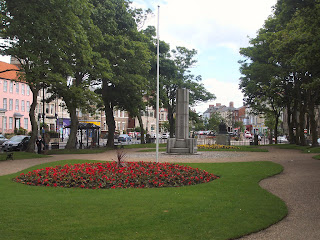r.jpg)
r.jpg)
First World War Memorial, Front Street.
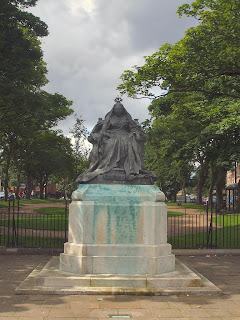r.jpg)
Statue of Queen Victoria, Front Street.
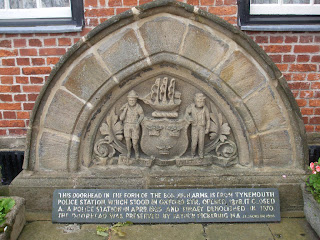r.jpg)
Police Station Doorhead.
In front of 45, Front Street is the doorhead of the former Tynemouth Police Station rescued when the Oxford Street building was demolished in 1950s. It displays the Coat of Arms from the days when Tynemouth was a County Borough.
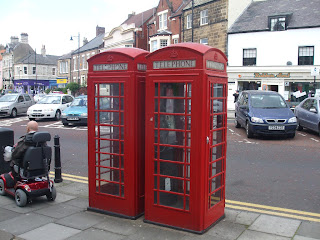r.jpg)
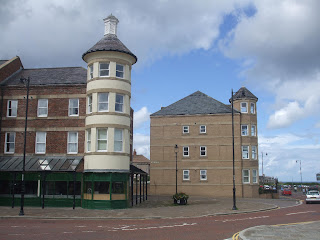r.jpg)
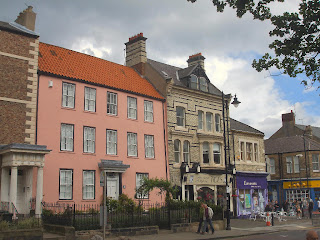r.jpg)
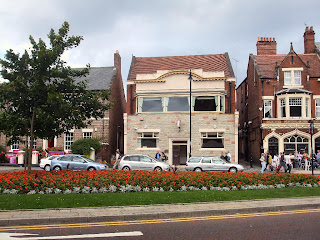r.jpg)
Front Street.
15th July 2008
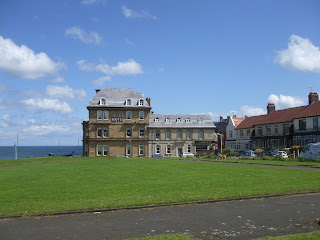r.jpg)
Grand Hotel.
16th September 2007

Front Street.
16th August 2006
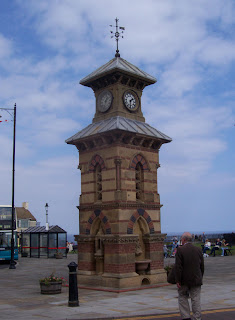r.jpg)
Clock Tower.
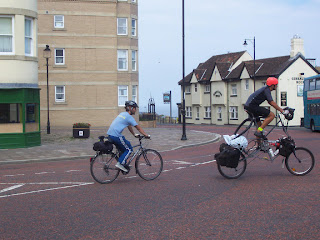r.jpg)
Front Street.
More Information:
- Wikipedia - Tynemouth
- Tynemouth Pictures and Video
- Historic England - First World War Memorial, Front Street
- Disused Stations - Tynemouth Station (Newcastle and Berwick)
- Historic England - Clock Tower
- Historic England - Grand Hotel
See my other photos around Tynemouth:







.jpg)
.jpg)
.jpg)
.jpg)
.jpg)
.jpg)
.jpg)
.jpg)
.jpg)
.jpg)
.jpg)

.jpg)
.jpg)
.jpg)
.jpg)
.jpg)
.jpg)
.jpg)
.jpg)
.jpg)
.jpg)
.jpg)
.jpg)


.jpg)
.jpg)
.jpg)
.jpg)
.jpg)
.jpg)
.jpg)

.jpg)
.jpg)
No comments:
Post a Comment